Tick Tock Clock: Working LEGO Clocks
/It’s About Time!
The art of telling time using mechanical principals has been around for many hundreds of years. What started out as a necessity has become largely artistic and aesthetic in the digital age. Many still love the history of mechanical clocks as well as the engineering challenge they present. Given that many AFOLs are also engineers, it’s not surprising to see many examples of LEGO clocks have been created over the years.
Time’s a-wastin’, BrickNerd Fans, so let’s dive into some of the best clocks the community has to offer!
Grandfather Clock
Grandfather clocks, also called long case or tall case clocks, are one of the most recognizable clock styles today. Often found lurking in living rooms, these majestic timepieces come in many variations, both in a physical case as well as mechanical functionality. They can often blend into a room’s decor, but this seven-foot-tall red and yellow grandfather clock by Eric Harshbarger can’t be missed! This clock was finished in 2003 and is still impressive to this day.
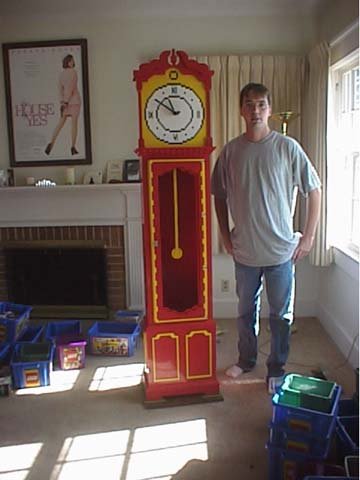
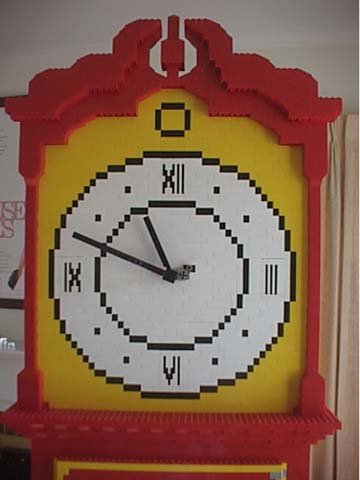

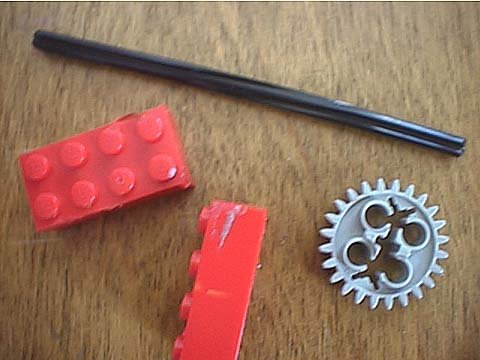
The clock is fully mechanical and is powered by a large weight, about 3.5lb or 1.6kg. The weight and wire holding it are the only non-LEGO aspect of the build. (That much weight can wreak havoc on the plastic gears and bricks!) The last photo above shows some of the casualties faced during building and testing. Notice the Technic axel deformed a full 90 degrees!
Let’s take the time and go over a little bit of clock lingo before we see the mechanism running inside. There needs to be something that takes all of the energy stored in the weight and then spreads it out over a longer period of time. That part of a clock is called an escapement. The pendulum swings back and forth at a very predictable rate, and on each pass it lets a small gear called the escape wheel turn slightly. This rotation also gives a little boost to the pendulum to keep it swinging until the weight reaches the bottom.
Back in 2003, there were not nearly as many elements available that were suitable to be used as escape wheels. In early versions of this build, Eric used a custom-made 12-tooth escape wheel. Switching to a much smaller 8-tooth version not only made the gearing much simpler but also increased the efficiency of the clock. With the new wheel, it’s able to run for a full 30 hours—much higher than the original 13 hours, while only using half of the weight.

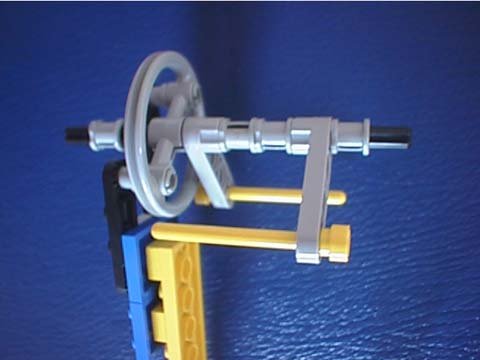

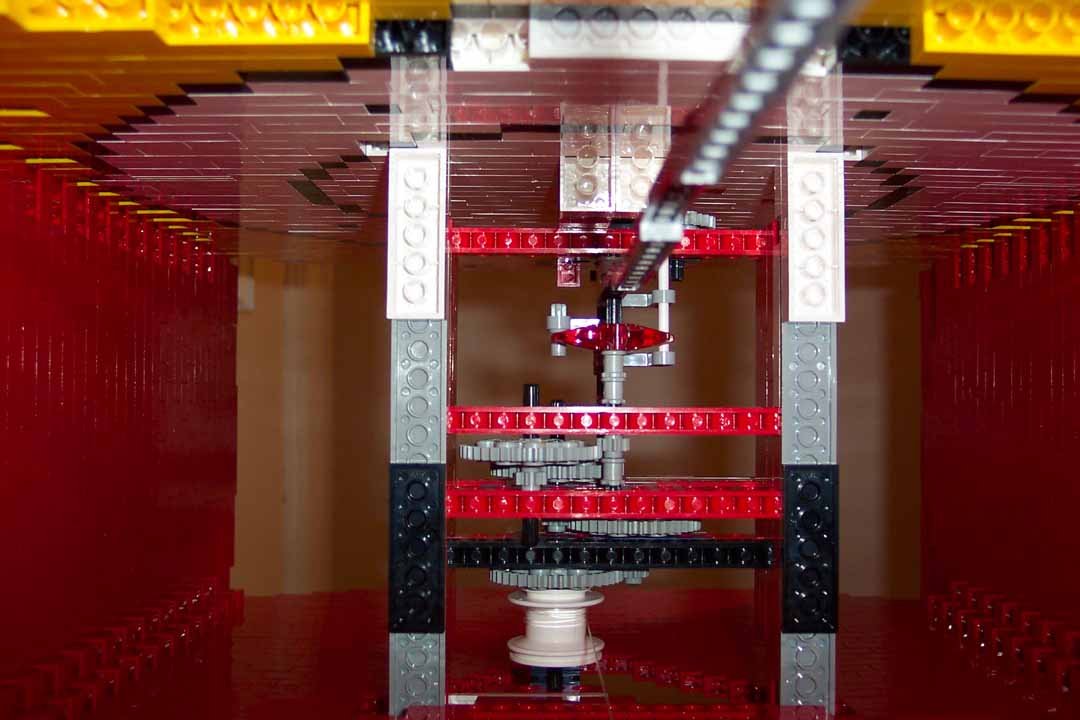
Eric has a webpage where he goes into even more detail about the gear ratios, other maths, and general thoughts on this build so make sure to check it out. But unfortunately, we simply don’t have time to get into all that today…
Mangle Rack
What is a mangle rack you ask? That’s a very good question and one that does not get associated with clocks a lot. To answer that question, I will send you to the master himself, Akiyuki, a well-known builder who has specialized in incredible mechanisms. He has a full video exploring the mangle rack if you would like to dive a bit deeper than we can go here. I’ve included an example of a simpler mangle rack in the photos below
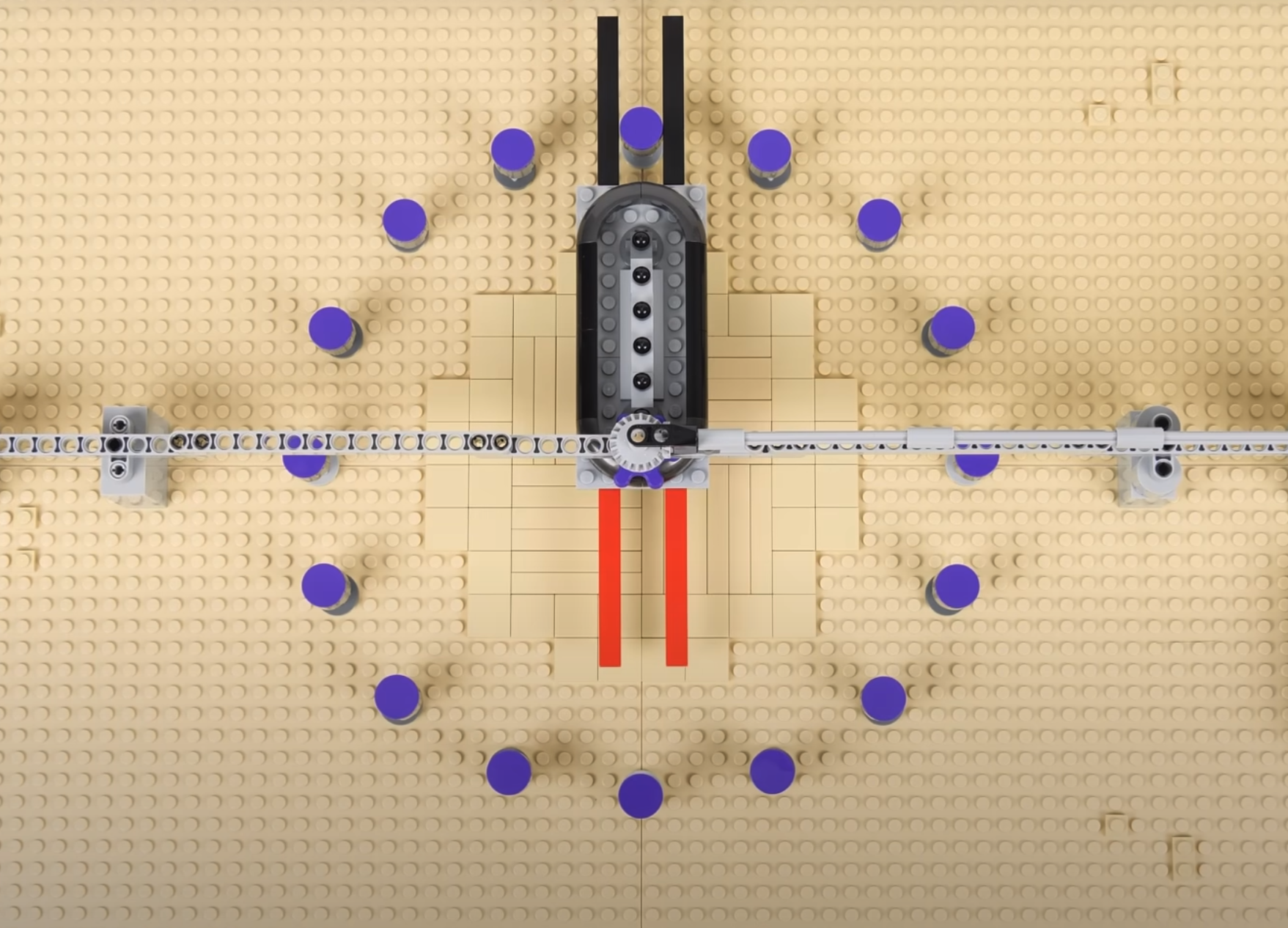
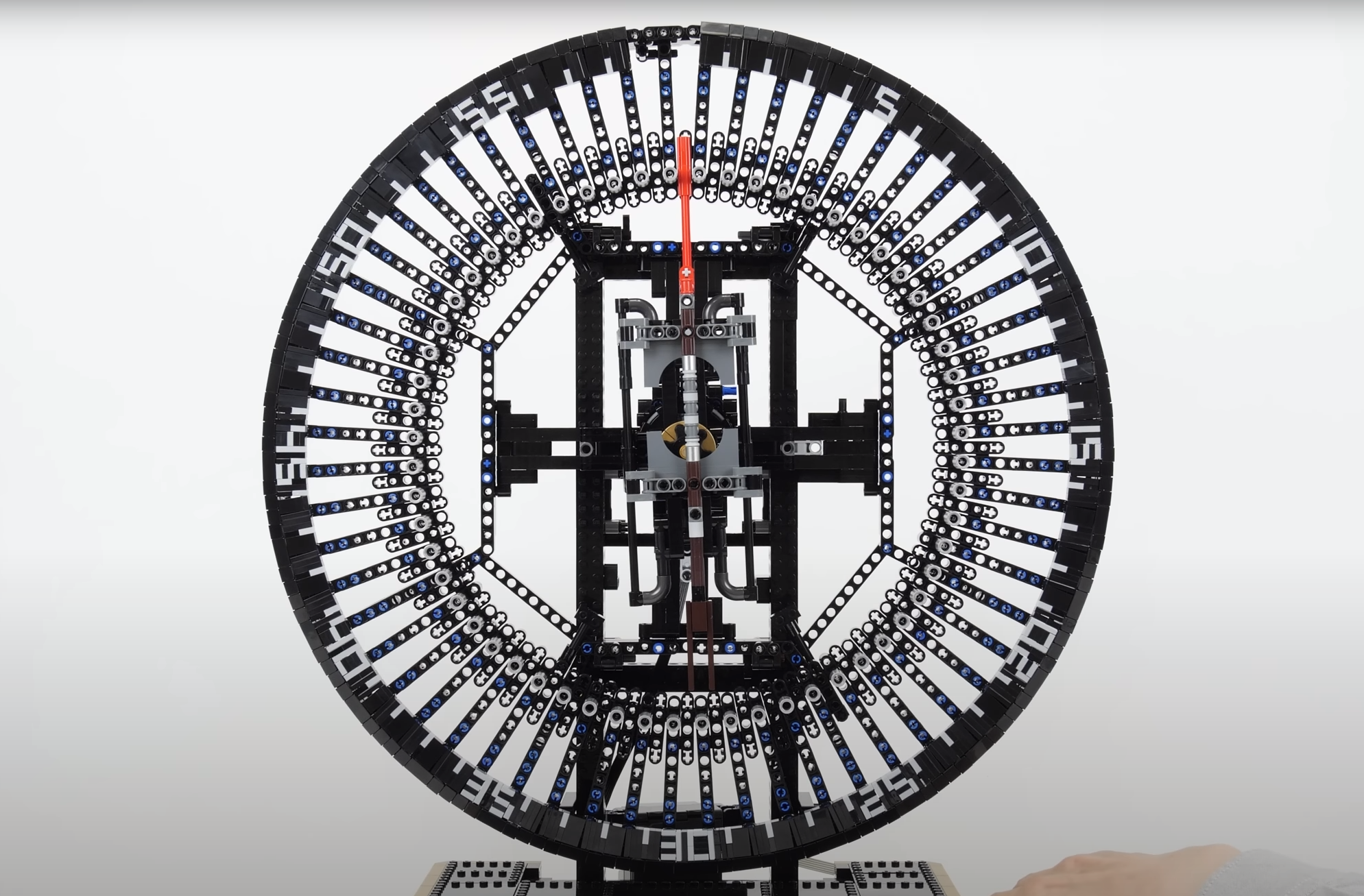
The Mangle Rack works by constraining a free-floating rack gear (the tall rounded circle with the black dots in the center in the example photo above) on one side at a time. Each leg, red and black above, is locked onto one of the purple dots. The result is a beautiful combination of linear and rotational motion that ends up with the rack gear making a full loop touching each of the constraining dots. This is the core principle of how the clock works. But instead of a 16-step rack, a full 60-step rack is used to tell the seconds on the clock.
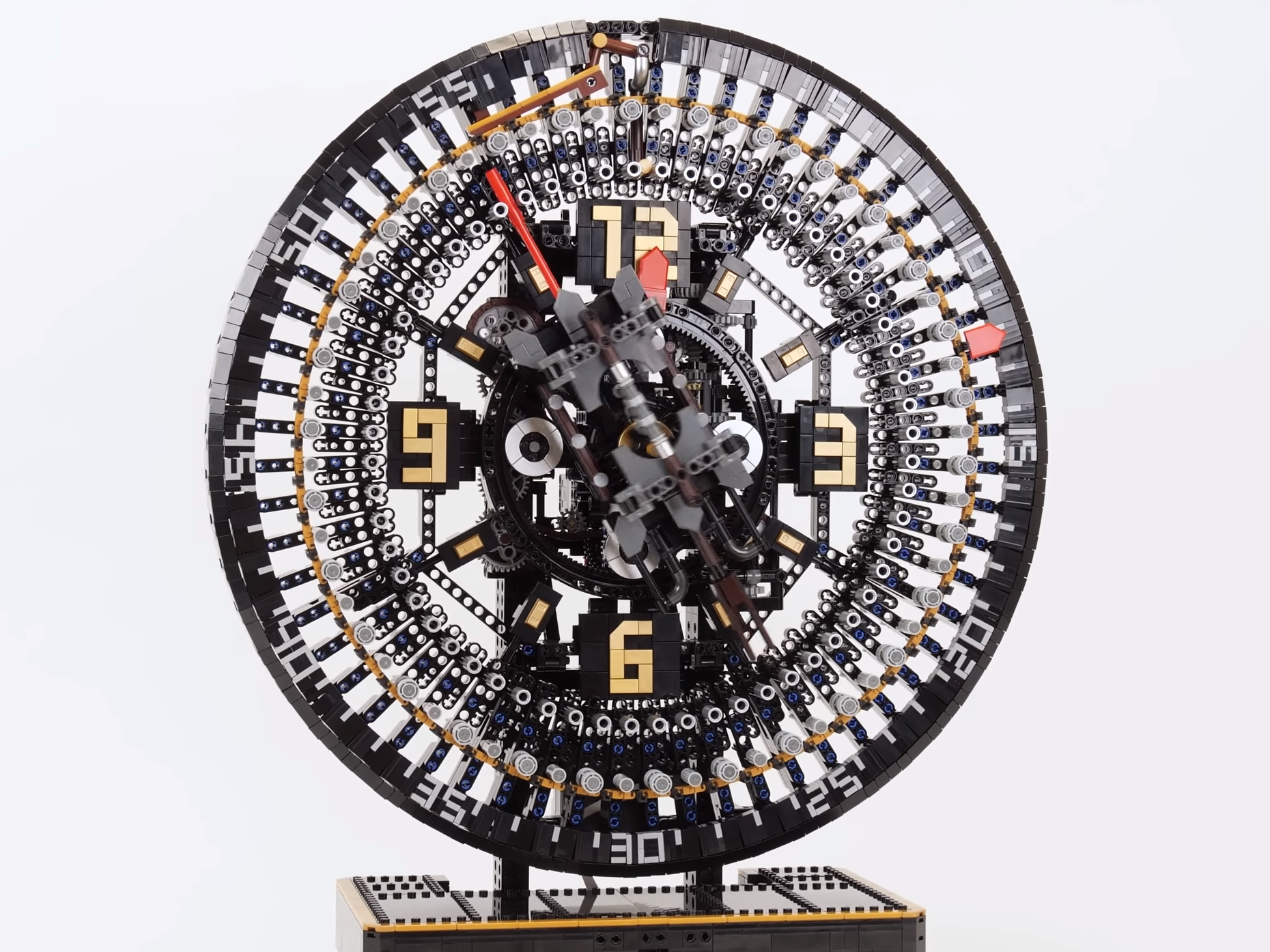
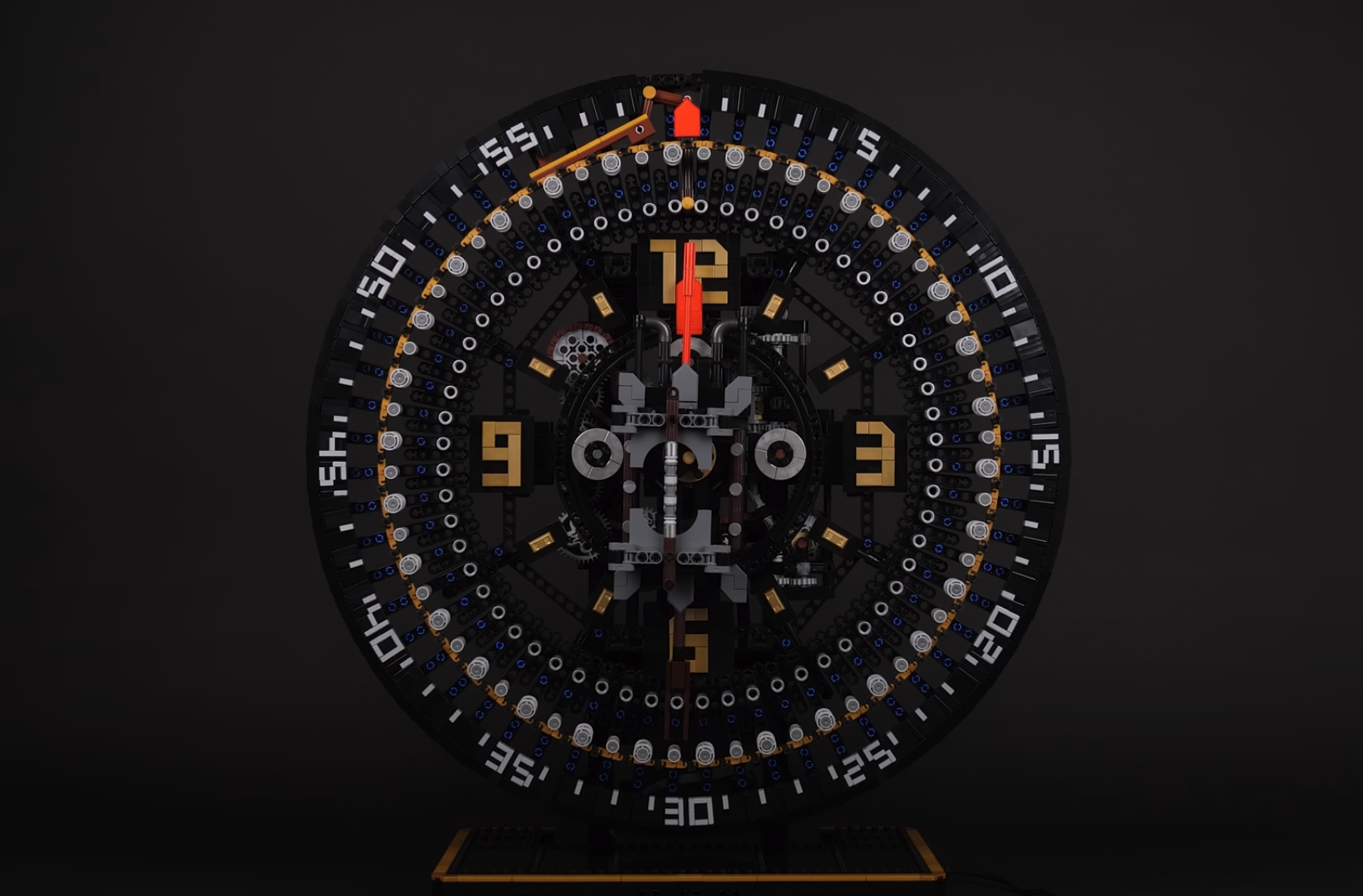
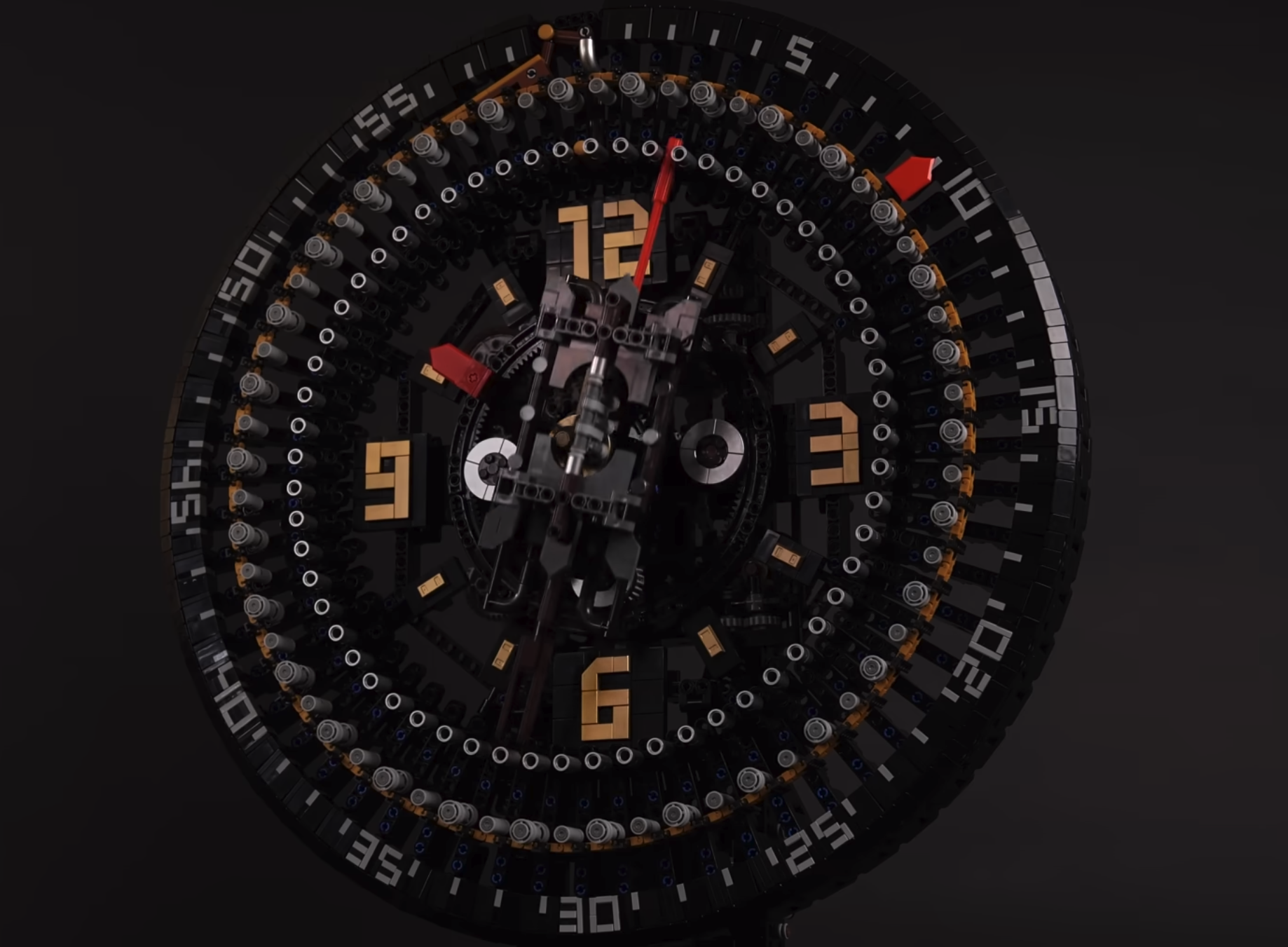
Akiyuki has a video showcasing the design and functionality of this clock. It is much better than anything I could hope to do here so I urge you to head over to his channel and watch the video (also included below)! One thing to note about this clock, it is powered by a motor, so there is no need for an escapement to regulate the speed that the clock is running. All of the gearing has been calculated based on the speed of the motor. With that, enjoy some photos of this beautiful clock, and don’t forget to watch the video!
Complications
Complications are most often talked about when referring to watches, but clocks can and do have them as well. A complication isn’t all that… complicated, actually—it’s just some extra features of a clock beyond its ability to tell basic time. These can be pretty much anything like showing the date, or month, and there is no limit to how many a clock can have. This clock in particular, built by Kevin Drake, has seven additional complications added to it. These include features such as a second hand, automatic rewinding, day and week tracker, lunar calendar, hour striking, and a flyback chronograph.
This clock is fully mechanical, and the only motor power is used by the automatic rewinder which winds the clock when it’s running low on power. One of the most interesting complications is the flyback chronograph. This basically adds stopwatch functionality to the clock and can be activated and deactivated at will. The flyback part indicates that it can be returned to its starting position without the need to stop any other part of the mechanism. This clock is also able to ring a bell to indicate the hour. I highly recommend watching the video Kevin has made that showcases each of the complications of this clock.
Seven Segment Display
The last clock on the list, by Niclas Graetz, is one of the more unique clocks in this line-up. It indicates the time by using four seven-segment displays while still managing to be fully mechanical! It also uses a very interesting pendulum alternative for timing regulation.
As you can see, this clock ditches the traditional circular dial, and uses a very digital looking output. These digits are controlled by programming drums that rotate each segment of the display to create the correct number. These are then connected together so that the ones place of the minutes causes the tens place to update and the tens place causes the hours to update when it’s the right time. Each digit can be set manually as well to aid in quickly changing the time shown.
This clock is powered by real spring steel clock springs which are very efficient at storing energy in a compact package. Instead of a pendulum to regulate the timing of the clock, a rolling wheel is used. This can be seen on the top left of the photo above. The wheel rolls on a track that can be tilted back and forth. Each time the wheel passes the middle, the track is flipped and a small amount of energy is released from the springs. The wheel’s momentum keeps it rolling up the hill until it turns around and rolls back towards the center. The time it takes for the wheel to make it’s round trip is constant and allows for consistent power output to the gear train that runs the rest of the clock.
Niclas has a great video detailing this clock and I would recommend giving it a watch.
Time to Wrap Things Up
The possibilities are endless when it comes to clocks! I hope this round-up taught you something about clocks and the mechanisms that go into making them run accurately. This was just a small subset of the many wonderful LEGO clocks that have been created over the years. The sky is the limit when it comes to what can be done with LEGO! So, go out there and build something incredible!
What other interesting mechanisms can be made with LEGO? Let us know in the comments below.
Do you want to help BrickNerd continue publishing articles like this one? Become a top patron like Charlie Stephens, Marc & Liz Puleo, Paige Mueller, Rob Klingberg from Brickstuff, John & Joshua Hanlon from Beyond the Brick, Megan Lum, and Andy Price to show your support, get early access, exclusive swag and more.




















